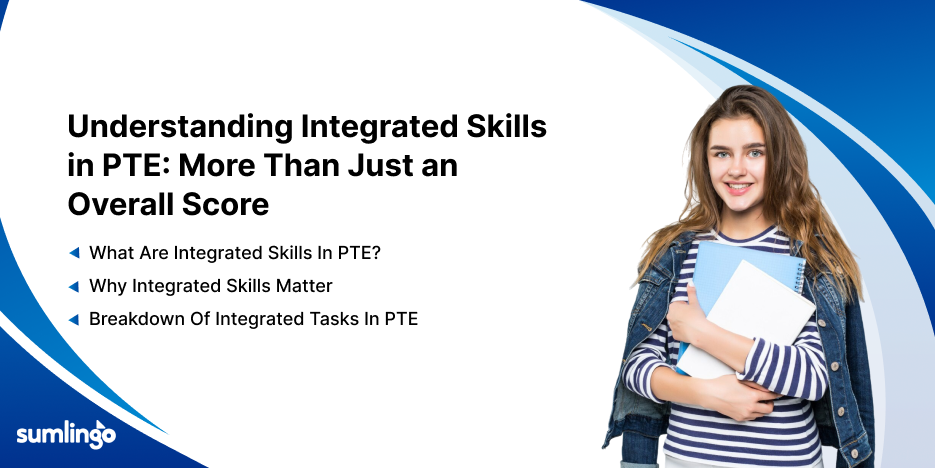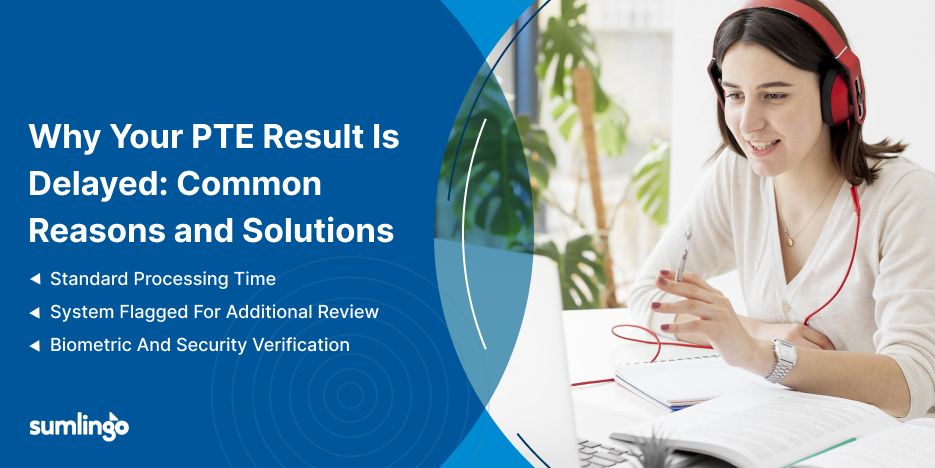If you’re preparing for the PTE Academic test, it’s not just about mastering English in isolated sections. Unlike traditional exams that measure listening, reading, writing, and speaking separately, PTE is unique because it has integrated questions that test multiple skills at a time. In this blog, we’ll break down what integrated skills mean in the context of the PTE Academic, explore each task type, and explain how understanding this approach can give you a strategic edge.
What Are Integrated Skills in PTE?
Integrated skills refer to each integrated task contributing to two different modules. For example, a task like Summarize Spoken Text affects both your Listening and Writing scores. That means a weakness in one skill could impact your overall performance in other sections.
Why Integrated Skills Matter
Many test-takers focus too much on their overall PTE score or specific skill scores. While these scores are important, understanding integrated questions is key to improving your performance. Let’s say you struggle with listening but do well in writing. If a task is marked as both listening and writing, your weak listening skills might lower your performance, even if your writing is strong. Recognizing this helps you identify which integrated areas need improvement.
Are you ready to test your skills?
Breakdown of Integrated Tasks in PTE
Let’s go part by part through the PTE test and highlight the tasks that test multiple skills at once:
Part 1: Speaking & Writing
1. Read Aloud
Skills Measured: Reading & Speaking
You read a short text on the screen aloud. This checks how well you understand written content and pronounce it.
2. Repeat Sentence
Skills Measured: Listening & Speaking
You hear a sentence and repeat it exactly. This task tests your memory, listening skills, and pronunciation.
3. Re-tell Lecture
Skills Measured: Listening & Speaking
You listen to a lecture (with or without visuals) and then summarize it in your own words.
4. Answer Short Question
Skills Measured: Listening & Speaking
You hear a simple question and respond briefly. This tests your ability to understand and reply accurately and quickly.
5. Summarize Written Text
Skills Measured: Reading & Writing
You read a paragraph and summarize it in one sentence. This tests comprehension, grammar, and vocabulary.
Part 2: Reading
1. Reading & Writing: Fill in the Blanks
Skills Measured: Reading & Writing
You drag and drop words into a paragraph. This task tests grammar, context understanding, and vocabulary.
Are you ready to test your skills?
Part 3: Listening
1. Summarize Spoken Text
Skills Measured: Listening & Writing
You listen to an audio clip and then write a summary. This task requires attention to main ideas, note-taking, and writing.
2. Fill in the Blanks (Listening)
Skills Measured: Listening & Writing
You listen to an audio and type missing words into the transcript.
3. Highlight Correct Summary
Skills Measured: Listening & Reading
After listening to a clip, you choose the best summary. This tests your comprehension across both audio and text.
4. Highlight Incorrect Words
Skills Measured: Listening & Reading
You listen while reading a transcript and identify words that were spoken differently. This tests attention to detail.
5. Write from Dictation
Skills Measured: Listening & Writing
You listen to a sentence and are required to write it exactly as you heard it. It checks spelling, sentence structure, and listening accuracy.
Tips for Mastering Integrated Skills in PTE
Now that you know which tasks involve multiple skills, here are a few strategies to boost your performance:
- Practice Active Listening: For listening-based tasks, train your ears with podcasts, news, and lectures. Practice summarizing them in writing or speech.
- Improve Reading Speed and Accuracy: Efficient reading helps you in reading-based tasks, but also in tasks where you have to read quickly and speak or write in response.
- Build Vocabulary in Context: Rather than memorizing word lists, learn how words function in full sentences. This helps in fill-in-the-blank tasks and summaries.
- Practice Integrated Mock Tests: Use PTE practice tests that include real PTE-style tasks. Simulating the test environment helps you get used to switching between skills quickly.
- Record and Review Yourself: For speaking tasks like “Read Aloud” or “Re-tell Lecture,” record your answers and listen critically. Focus on fluency, pronunciation, and clarity.
Are you ready to test your skills?
It is important to understand how each integrated task contributes to the two different skill scores is essential for targeted preparation. Instead of practicing skills in isolation, focus on how they interact. For example, improving your listening can directly boost your performance in tasks that also involve speaking or writing.










